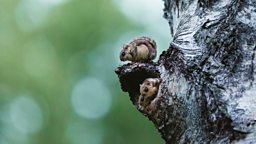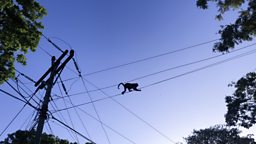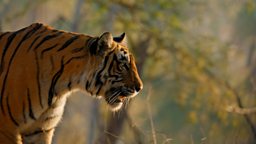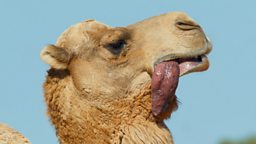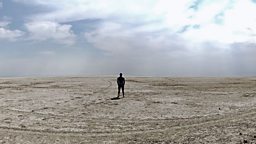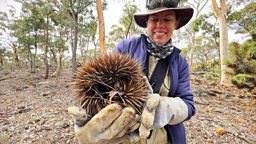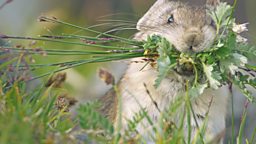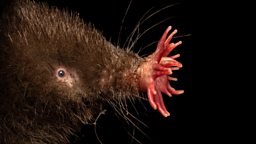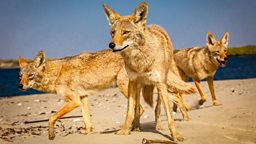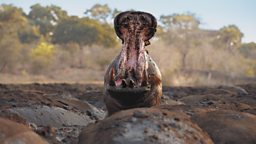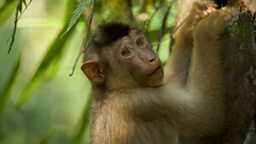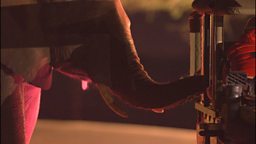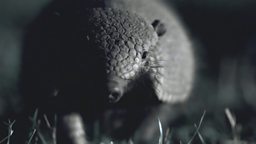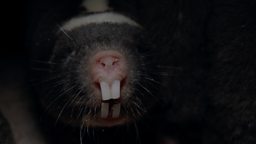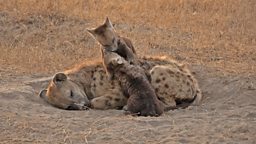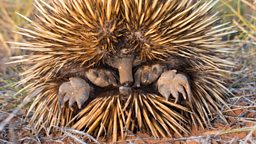Palm oil pest control and raining rats!
By Mammals Researcher, Amy Downes

As our plane came into land in Kuala Lumpur, the first thing we noticed was the palm oil plantations stretching as far as the eye could see. Malaysia produces about a third of the world’s palm oil, and it’s a sobering thought that many of these huge areas of monoculture were once thriving, primary rainforest.
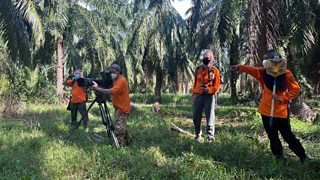
For this particular shoot however, we were relying on these plantations….they were the unexpected mammalian habitat we were here to film for The New Wild episode. The crew and I had travelled here in the hope of capturing an incredibly unique behaviour that had never been filmed for TV before, but it had been a struggle to even make it into the country. I had been in touch with the scientists running this project for over 3 years, and we had tried to organise two shoots previously, both of which had been cancelled due to the Coronavirus pandemic.
We were one of the very first foreign TV crews allowed back into Malaysia and we had to do an in-country hotel quarantine the week before to make sure we were all clear of the virus. So, when we made it to the filming location a full 7 days after we had left the UK we were jubilant at the first sighting of our mammalian friends; southern pig-tailed macaques.
Pig-tailed macaques are widely regarded by plantation owners as a nuisance, if not as pests to palm-oil crops. They come into the plantations from the adjacent rainforest in large groups of up to 80 animals to find food, including the abundant palm oil fruit. It’s a nutrient rich food source and is easy for them to forage but we knew from the scientists studying them, that these particular macaques were in the plantations for another culinary treat…
The first few days in the field were a shock to the system. It was swelteringly hot and humid, and we were constantly on the move with heavy equipment. The mosquitos and leeches were prolific too. To stop the leeches attaching (or even worse – climbing up your legs to reach the bigger arteries!) the best approach was to tuck trousers into socks and t-shirts into trousers, but I still often took off my boots at night to find my socks covered in blood as the leeches had managed to bite through them.
The macaques were habituated to our scientists bright orange project t-shirts, so we had to wear these at all times in the field. Our allotted four t-shirts per person didn’t feel like quite enough after we had sweated through the first ones in about 2 minutes flat.
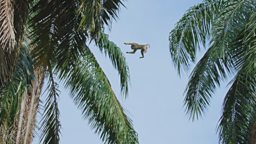
We were exhausted after only a few days of following the macaques through what felt like exactly the same landscape, hour after hour. Every palm tree the same shape and the same distance apart, the macaques moving quickly and efficiently through the crowns…..but suddenly there was a flurry of activity in the palms, thirty metres above our heads, and a loud squeak….
You may have heard of the term ‘raining cats and dogs’ but I never thought I’d be running around in the tropical humidity, trying to avoid being hit on the head by a downpour of rats!
….Something fell from the sky almost landing on me and Camera Operator Graham MacFarlane. You may have heard of the term ‘raining cats and dogs’ but I never thought I’d be running around in the tropical humidity, trying to avoid being hit on the head by a downpour of rats!
And so began our quest to film some amazing behaviour – hunting other mammals is rare in primates, and these are the only macaques known to science who do it on a regular basis.
This particular population of pig-tailed macaques is known to enter the plantations most days to hunt and eat rats, in fact one of the groups we were filming were found to catch around 3000 rats in a year. They actively search for the rats in their daytime nesting spots high up in the palm trees and one of the best strategies is for younger macaques to search in the palm crowns, flushing the rats out so that they fall down to the ground. Here the Alpha male macaque patiently waits for “his” treat and picks the rats off as they hit the ground. He then takes his time eating them, and sometimes leaves the scraps for his best apprentices.
These sequences of events happened so quickly that it was extremely difficult to film the action – but remarkably, the researchers could predict behaviour of the macaques, as they have been studying them for a long time and have got to know the different individuals and behaviours in the group. This was a huge help for capturing the key shots of the rat hunt.
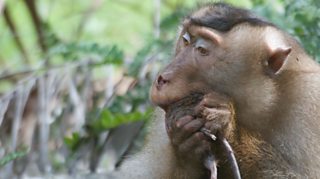
One element to this predation that we didn’t quite expect, was that to kill these big rats the macaques simply bite their heads off – it was fairly macabre the first time we witnessed it, but at least it was definitely very quick and humane in the scheme of things. We had to remember that catching and eating rats was a great source of food for the macaques, whose natural forest habitat is becoming smaller and smaller.
Rats are a huge pest problem in palm oil plantations, causing hundreds of millions of dollars worth of damage every year in Malaysia alone. These pig-tailed macaques eat so many, that they actually act as biological pest control, meaning that farmers would no longer need to use rat poison baits that endanger other species and the environment. The long-term study here suggests that allowing these macaques to use the plantations to hunt for pest rats instead of chasing them out could be beneficial for palm oil growers and wildlife alike.
It was incredible to witness these charismatic animals in the wild. But with headless rats, leeches, swamps and 40 degree heat I wouldn’t say it was a shoot for the light-hearted!
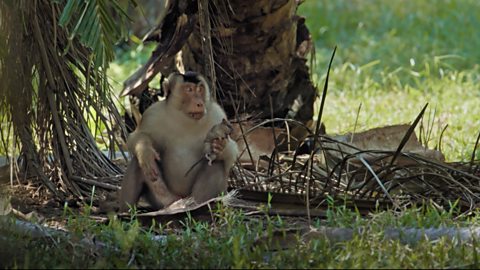
Macaques aren't just vegetarians
Pig-tailed macaques have added rats to their usually vegetarian diet.

